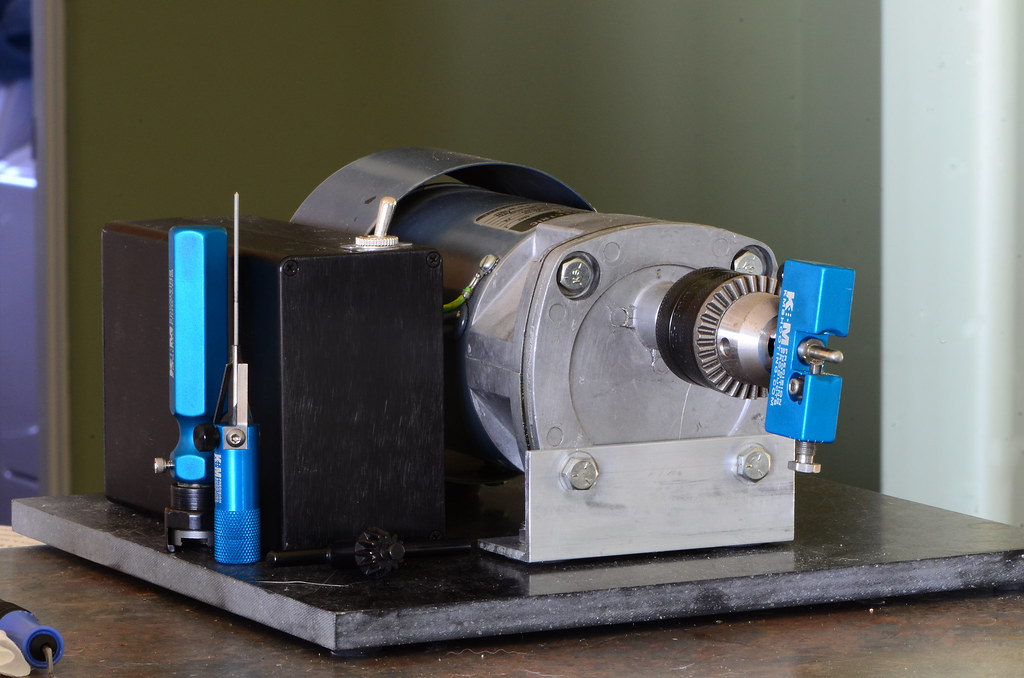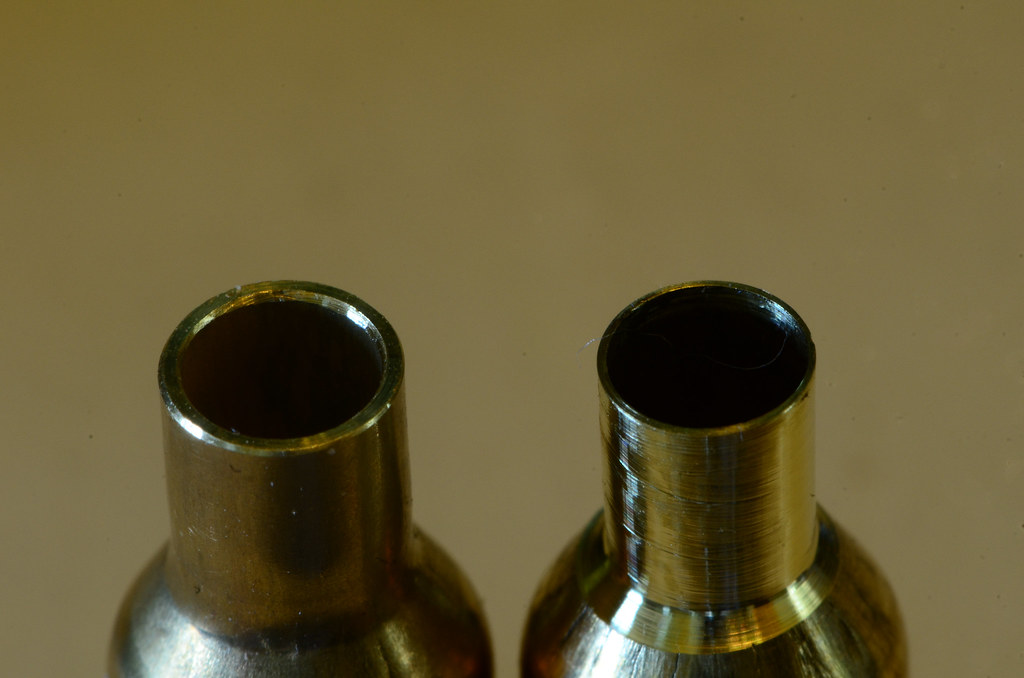Re: for those who neck turn
<div class="ubbcode-block"><div class="ubbcode-header">Originally Posted By: SubXerO</div><div class="ubbcode-body"><div class="ubbcode-block"><div class="ubbcode-header">Originally Posted By: 427Cobra</div><div class="ubbcode-body">This is how I neck turn brass
1. Full Length size with a non bushing die, decapping stem removed.
2. Expand the neck with a expander mandrel.
3. Trim to a uniform length.
4. Turn the necks to .0135, this is a skim cut, some get turned all the way around, some 50%, most 75%.
5. Tumble the lube off, I use Imperial sizing wax.
I do steps 1-4 in small batches of 5 because I noticed my turned thickness is much more consistent, brass will spring back a little causing a loose fit on the turning mandrel. Consistent neck thickness is the key step to concentric ammo, I have also noticed a reduction in ES/SD between turned and not turned cases, fliers have not been eliminated, but greatly reduced, group sizes have not shown a remarkable improvement but have improved. Neck Turning IMHO is not a waste of time, but it is a lot of work, but it's only a one time thing like primer pocket uniformimg, and flash hole deburring. </div></div>
Why is it important to use a FL die over a bushing die?
what am i missing here? </div></div>
The bushing will only resize part of the neck. I think it stops something like .050 short of the shoulder. The FL sizer will resize the entire neck. If you don't use the FL resizer you run the risk of having an ununiform neck thickness, aka thin spots close to the shoulder.
Think of the neck initially being .500. Then you neck size it to .450. Now you have a situation where the outside neck diameter is two different thicknesses, .500 close to the shoulder and .450 the rest of the way. If you follow the next step and expand the brass to .480, you still have two different outside neck diameters. The neck turner only trues up the outside diameter and if you run it in this scenario, you will be left with thin spots on the neck. The FL resizer is the only way to be sure that you resize the entire neck and turn the necks to the same thickness.




